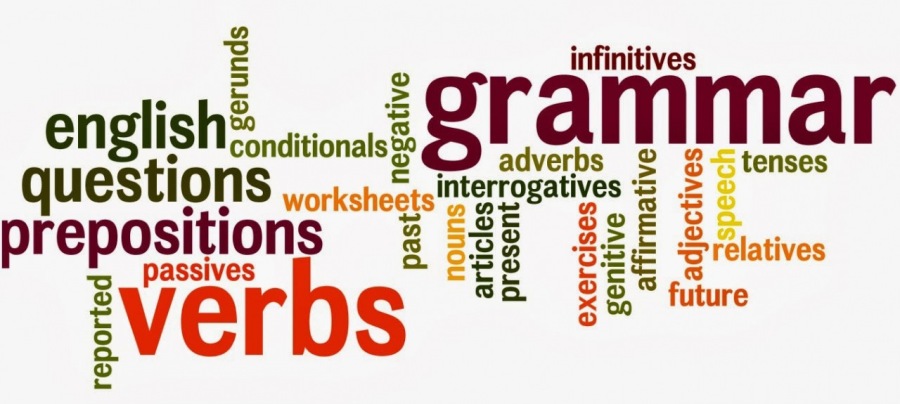Thursday Thoughts: A Few Tips to Visually Smooth Out Your Writing

Once in a while, one that needs a little more work.
Sometimes it's the words the words they choose. Sometimes it's the topic. Sometimes it's that the author, who may be a genius at a specialty I've never even heard of, just doesn't know enough about grammar and usage.
But sometimes it's the way the article looks -- the physical layout and setup. It's the first impression that I get, and if it looks like an 8-year-old wrote it ...
Luckily there are a few things that can help almost anyone have their writing look like something that's worth reading. And they're all mechanical, so they're easy for most of us to implement.
- Be consistent with your sentence spacing. The standard, which has been mostly accepted over the last 20 + years, is one space between sentences. I know that a lot of writers still use two, and I did for a long time. I finally gave in. But here's the thing: It's either one or two spaces between them. Never three or four or five.
- Use either one period at the end of a sentence or three (if you're using the ellipsis mark), not two or four or five.
- Be careful about breaking words into syllables at the end of a line. Too many hyphens trailing down the right side looks awful, especially if you're only leaving two or three letters before the hyphen. In those cases, put the whole word on the next line.
- Limit your use of italics, which look fussy when it's all a reader sees. Italics are fine under a picture or as a way to highlight a word, especially on social media platforms that may not have many formatting options. But please exercise restraint.
- Break your paragraphs! Huge blocks of text -- more than about 8 or 9 lines -- are very hard to read; they look intimidating and it's too easy to get lost in the middle of them. The simplest way is to put one blank line between them. It makes each paragraph stand out, and it gives your readers a moment to rest.
- Leave your right margin ragged (as my article is here). Stay away from justifying your right margin unless you think you must. (And if that's the case, call me. I'll talk you out of it.) Justifying it means the spacing between words may not be the same line to line; all the words have to fit within a prescribed area, and sometimes -- in the worst cases -- there may be just one or two words on the line with huge spaces between them.
This is another example of "just because you can doesn't mean you should." The yellow highlights on the justified block show the excess space that is created with too few letters to fill the space.
And surprisingly, justified text is very hard for those who are dyslexic, due to what is called a "river effect," that of flowing water through the text. Click here for more.
I'd love to know what YOU think we should do to make our writing physically appealing enough for readers to eagerly dive in and see what we have to say.
If you learned anything of value here, please share this post. Let's help others learn what you did -- and see what you're going to share with us in the comments.
For more of my posts, visit my website: GrammarGoddess.com. And remember: I will always look at one of your pages -- one time, please -- for free and let you know what I see.
Articles from Susan 🐝 Rooks, The Grammar Goddess
View blog
Sometimes I create a Funday with a theme; other times the theme comes begging to be recognized! And ...

Brand Message Expert Daisy McCarty asked me recently about whether to use a comma or and in a senten ...

It's been quite a while since I last offered you a quiz, so ... · I hope you knock this one off in a ...
Related professionals
You may be interested in these jobs
-
Cashier
Found in: Lensa US P 2 C2 - 5 days ago
RelaDyne Midvale, United StatesJob Description · Cashier · Pay: $16 Per hour · Hours:Mostly Nights/Weekends. Scheduled is made 1 month in advance · About the Company: RelaDyne, Inc. is the established leader in lubricant sales, distribution, equipment reliability services, and value-added services. Our locat ...
-
Preschool Aide
Found in: Lensa US P 2 C2 - 1 day ago
Archdiocese of Los Angeles Los Angeles, United StatesAbout the Employer · The Archdiocese of Los Angeles and the Department of Catholic Schools work with over 200 Catholic elementary schools and 50 Catholic high schools throughout Los Angeles, Ventura, and Santa Barbara counties and operate as the largest Archdiocese in the United ...
-

Transportation Analyst
Found in: Talent US C2 - 4 days ago
Danone Broome County, United StatesShort Intro and About the Job · Quality, efficiency, and safety all play a big role in our work at Danone. Manufacturing the best products and supplying them to meet demand is a key driver for the Supply Chain team. We are currently looking to hire a Transportation Analyst base ...


Comments
Martin Wright
6 years ago #7
Lisa Vanderburg
6 years ago #6
Phil Friedman
6 years ago #5
Phil Friedman
6 years ago #4
John Rylance
6 years ago #3
Lisa Gallagher
6 years ago #2
Lupita 🐝 Reyes
6 years ago #1